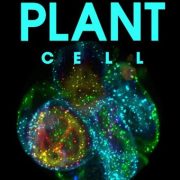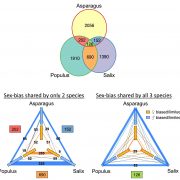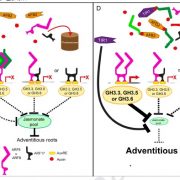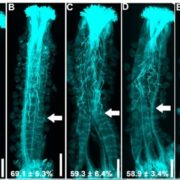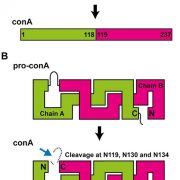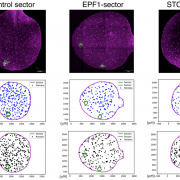LEAFY is a pioneer transcription factor and licenses cell reprogramming to floral fate (Nature Comms)
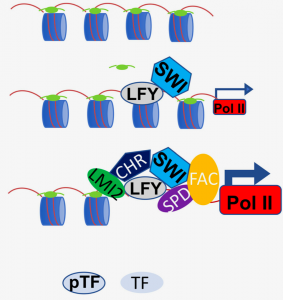 Master transcription factors (TFs) can activate specific genetic programs to reprogram cellular fate in the context of open chromatin. A special class of these proteins known as pioneer TFs are defined by their ability to trigger cell fate reprogramming by binding their cognate cis motifs in a nucleosome context both in vitro and in vivo, facilitating access of additional master TFs through chromatin opening. Pioneer TFs have been primarily studied in animals, however although pioneering activity has been proposed for several plant TFs it has not been established if any of these potential pioneering factors indeed contact nucleosome-occupied regulatory motifs. An interesting potential pioneering factor to investigate is LEAFY (LFY), an essential TF for floral fate that acts through upregulation of the floral commitment TF APETALA1 (AP1) and for which several lines of research hint at possible pioneer factor activity. A recent work by Jin et al. combined biochemical, structural and genomic approaches to unravel LFY mechanism of action and assess whether LFY indeed acts as a bona fide pioneer TF. The authors found that LFY can bind nucleosome-occupied AP1 target locus both in vitro and in vivo, consistent with what is observed for mammalian pioneer TFs. Furthermore, ChIP-qPCR and structural analyses revealed that LFY displays additional characteristic properties of mammalian pioneer TFs, such as chromatin opening through linker histone H1 displacement and subsequent chromatin remodeling as well as the ability to form very shallow DNA contacts, thus allowing for recruitment of additional factors to trigger cell reprogramming. This report calls attention to further identify, validate and characterize pioneer transcription factors in plants in order to better understand the basis of plant developmental plasticity and cell fate reprogramming. (Summary by Jesus Leon @jesussaur) Nature Comms 10.1038/s41467-020-20883-w
Master transcription factors (TFs) can activate specific genetic programs to reprogram cellular fate in the context of open chromatin. A special class of these proteins known as pioneer TFs are defined by their ability to trigger cell fate reprogramming by binding their cognate cis motifs in a nucleosome context both in vitro and in vivo, facilitating access of additional master TFs through chromatin opening. Pioneer TFs have been primarily studied in animals, however although pioneering activity has been proposed for several plant TFs it has not been established if any of these potential pioneering factors indeed contact nucleosome-occupied regulatory motifs. An interesting potential pioneering factor to investigate is LEAFY (LFY), an essential TF for floral fate that acts through upregulation of the floral commitment TF APETALA1 (AP1) and for which several lines of research hint at possible pioneer factor activity. A recent work by Jin et al. combined biochemical, structural and genomic approaches to unravel LFY mechanism of action and assess whether LFY indeed acts as a bona fide pioneer TF. The authors found that LFY can bind nucleosome-occupied AP1 target locus both in vitro and in vivo, consistent with what is observed for mammalian pioneer TFs. Furthermore, ChIP-qPCR and structural analyses revealed that LFY displays additional characteristic properties of mammalian pioneer TFs, such as chromatin opening through linker histone H1 displacement and subsequent chromatin remodeling as well as the ability to form very shallow DNA contacts, thus allowing for recruitment of additional factors to trigger cell reprogramming. This report calls attention to further identify, validate and characterize pioneer transcription factors in plants in order to better understand the basis of plant developmental plasticity and cell fate reprogramming. (Summary by Jesus Leon @jesussaur) Nature Comms 10.1038/s41467-020-20883-w


